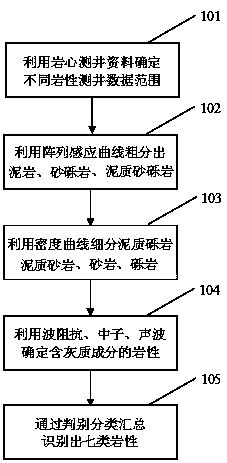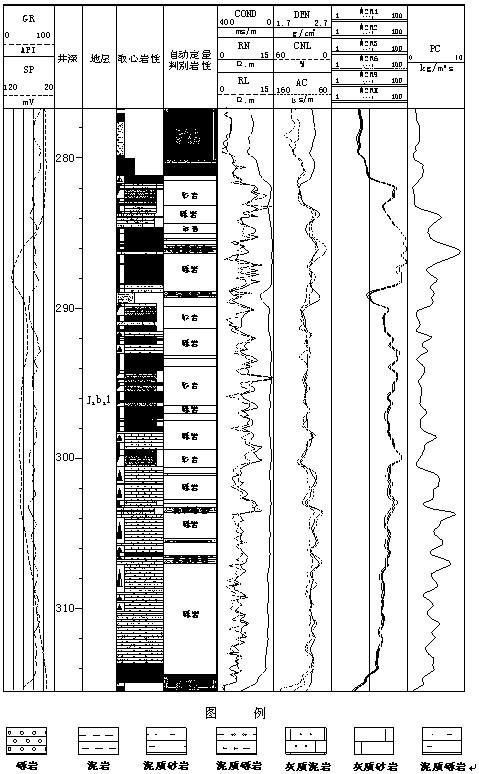Quantitative identification method of complex glutenite body lithology by wave impedance
A quantitative identification and wave impedance technology, applied in the field of quantitative identification of complex glutenite lithology using wave impedance, can solve the problems of weak compaction, difficult to quantify, and difficult to distinguish, etc., and achieves clear technical ideas, good operability, The effect of promoting
- Summary
- Abstract
- Description
- Claims
- Application Information
AI Technical Summary
Problems solved by technology
Method used
Image
Examples
Embodiment Construction
[0035] In order to make the above and other objects, features and advantages of the present invention more comprehensible, preferred embodiments are listed below in conjunction with the drawings, which are described in detail as follows.
[0036] Such as figure 1 As shown, figure 1 It is a flowchart of a specific embodiment of using wave impedance to quantitatively identify the lithology of complex glutenite bodies according to the present invention. In a specific example of applying the present invention, it is applied to a core well A in Xinjiang Chunhui Oilfield, such as figure 2 As shown, the quantitative batch discrimination of the lithology of the complex glutenite body is realized, including the following steps:
[0037] In step 101, use core data and log data to determine that different lithologies are induced in the array (M 2 R 1 ), Density (DEN), Acoustic Time Difference (AC), Neutron Porosity (CNL) and other logging data.
[0038] In step 102, on the basis of step 101, ...
PUM
 Login to View More
Login to View More Abstract
Description
Claims
Application Information
 Login to View More
Login to View More - R&D
- Intellectual Property
- Life Sciences
- Materials
- Tech Scout
- Unparalleled Data Quality
- Higher Quality Content
- 60% Fewer Hallucinations
Browse by: Latest US Patents, China's latest patents, Technical Efficacy Thesaurus, Application Domain, Technology Topic, Popular Technical Reports.
© 2025 PatSnap. All rights reserved.Legal|Privacy policy|Modern Slavery Act Transparency Statement|Sitemap|About US| Contact US: help@patsnap.com


